The complete beginner’s guide to a protein-sparing modified fast that is designed to help you to lose weight fast.
Download your FREE protein diet meal plan, PSMF calculator, and 97 easy things you can eat.
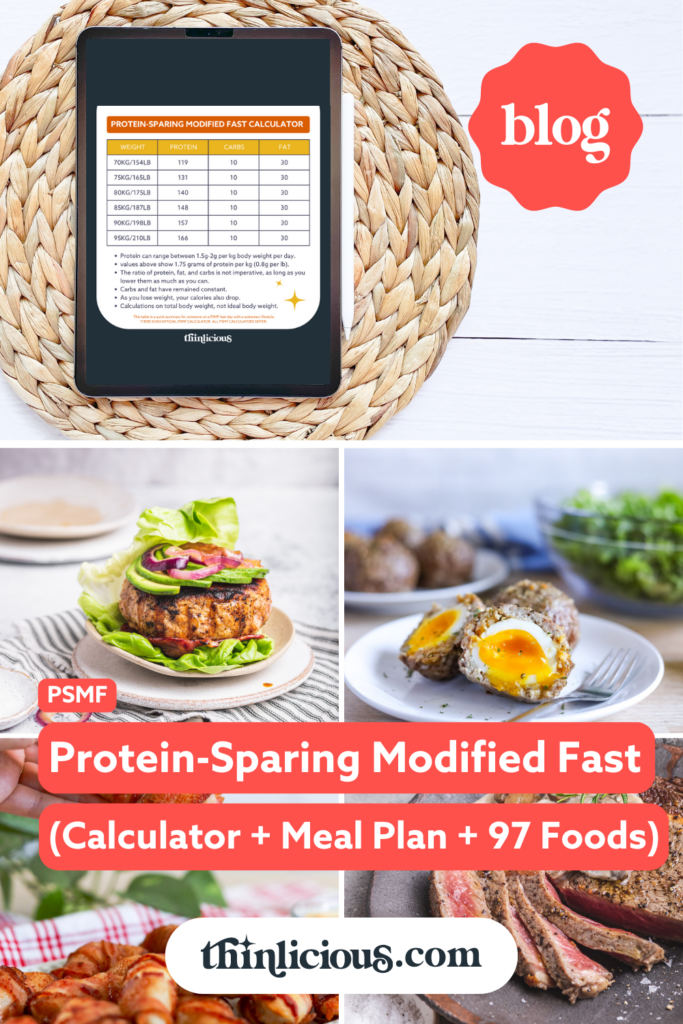
You can download the free printable PDF guidebook, meal plan, PSMF food list, and PSMF calculator.
Medical Disclaimer -Before embarking on any change in diet, lifestyle or activity, you may need to be under the supervision and care of your primary healthcare provider. This article should not be construed as medical advice, nor should it be substituted for medical advice from your healthcare provider. By continuing to read this article, you assume all responsibilities and risks for instituting lifestyle management.
🏆 What is a Protein Sparing Modified Fast (PSMF)?
The protein-sparing modified fats is a high-protein very low-calorie diet designed to help you lose weight fast while not losing any muscle.
Are you ready to lose weight and heal your body for life (without dieting, drugs, or making yourself miserable)?

Our free on-demand video training will walk you through how to make this THE year you set health goals…and keep them.
The PSMF diet was designed to help obese patients kick-start rapid weight loss before bariatric surgery in the 1970s.
The most common clinical PSMF diet looks like this:
- Protein-rich diet
- Keep fat and carbs low
- 800 calories per day
- Medically supervised PSMF: Intensive phase for up to 6 months followed by a refeeding phase for 6-8 weeks.
- Stubborn weight loss: PSMF 3 days per week, moderate keto diet or low-carb diet 4 days per week
- Focus on whole foods
- Take adequate electrolytes and fluids
- Consider taking a multivitamin
Why is it called Protein Sparing Modified Fast?
Eating a high-protein low-calorie low-carb low-fat diet, allows your body to lose body fat fast while sparing muscle from being lost. A more accurate name should be muscle-sparing protein fast, but instead, it is called PSMF, protein-sparing modified fast.
Is the PSMF diet the same as keto?
PSMF and the keto diet have different macronutrient ratios, but both rely on carb restriction.
The keto diet has moderate protein, higher healthy fats, below 20g net carbs, and does not focus on calories.
Protein-sparing modified fasts are high-protein, low-fat, low-carb, and rely on calorie restriction for fast weight loss. There is an intensive phase to lose fat and a refeeding phase which is similar to the ketogenic diet.
Does a protein-sparing modified fast work?
When you want to lose weight, you really want to lose body fat (not muscle).
The PSMF diet works to lose body fat because it is a very low-calorie diet and a low-fat diet. Your body has to burn its own body fat for energy but you will retain lean body mass because you are eating a high-protein diet.
How much weight can you lose on PSMF?
Most people who start a protein-sparing modified fast repost losing 1kg – 3kg per week in the intensive phase. (Source)
How much weight and how quickly you can lose weight will depend on various factors such as:
- How much weight do you have to lose?
- Are you active or sedentary?
- How long will you stay in the intensive phase or the refeeding phase?
- Are you insulin resistant?
Is the PSMF safe?
All the studies suggest that the protein-sparing modified fats are safe, and effective, as long as it is medically supervised and well formulated. It is best to base your PSMF meal plan on whole foods (unprocessed foods) and not rely on junk food or protein bars, protein shakes, or meal replacements.
What are the benefits of a PSMF?
Not only do you lose weight fast, but you maintain lean body mass. You may also experience:
- Reduced cravings
- Reduced hunger
- Increased satiety
- Increased nutrient density
- Increased energy
- Better mood
- Improved muscle gain
What is the side effect of a PSMF?
While very low-calorie diets are generally well tolerated, there may be some transient (temporary) side effects.
All of these are similar to the keto flu. The keto flu can be prevented, or symptoms relived, by increasing fluid and electrolyte intake.
- Tiredness
- Headache
- Nausea
- Increased thirst
- Fatigue
- Constipation or diarrhea
- Bad breath
Who shouldn’t do a PSMF diet?
Anyone who has a preexisting medical condition that needs constant medical supervision during weight loss needs permission from their regular medical professional to start.
This is not to say PSMF is not safe for these patients, but they will need medical supervision and monitoring as they lose weight and their health markers may improve. Some medications may need reducing or adjusting. For example (but not limited to), people with:
- Heart palpitations
- Angina (chest pains)
- Heart attack
- Heart disease
- Hypoglycemia
- Kidney disease
- Eating disorders
- Underweight
- Thyroid disorders
- Pregnancy, lactating
- Gallbladder disorders
How much protein to consume on a PSMF?
During the intensive phase (weight loss phase), you generally consume 0.7g – 0.9g of protein per pound (1.5g – 2g protein per kg) of body weight.
During the refeeding phase (maintenance phase), protein is slowly reduced as you add quality carbs and healthy fats back to your diet.
Your protein should be lean protein foods such as skinless chicken breast, lean ground beef, white fish, egg whites, shrimp, tuna, and turkey.
How much fat to consume on a PSMF
Compared to a conventional low-calorie diet, you can enjoy some healthy fats but only eat the fat that comes along with your dietary protein source.
It is the combination of high-protein and low-fat that allows you to lose weight quickly while maintaining lean body mass.
How many carbohydrates to consume on a PSMF
It’s best to keep carbohydrate intake as low as possible to lose weight quickly. The PSMF calculator below shows 10g net carbs per day during the intensive phase.
How many calories are in a PSMF?
During the intense phase, it is a very low-calorie diet of only 800 calories per day, mainly from dietary protein, minimal carbs, and minimal fat.
🏆 Protein-sparing modified calculator
There are many keto calculators for the protein-sparing fast, and each one will give you a slightly different set of macros.
For most protein-sparing modified calculators, protein intake ranges between 1.5g-2g per kg body weight per day.
This table is a quick summary for someone with a sedentary lifestyle on a PSMF fast day.
- Protein intake of 1.75 grams of protein per kg (0.8g per lb).
- The ratio of protein, fat, and carbs is not imperative, as long as you lower them as much as you can.
- Carbs and grams of fat have remained constant.
- As you lose weight, your calories also drop.
- Calculations on total body weight, not ideal body weight.
| WEIGHT | PROTEIN (4 calories/g) | CARBS (4 calories/g) | FAT (9 calories/g) | CALORIES |
|---|---|---|---|---|
| 70kg/154lb | 119 (476) | 10 (40) | 30 (270) | 786 |
| 75kg/165lb | 131 (524) | 10 (40) | 30 (270) | 834 |
| 80kg/175lb | 140 (560) | 10 (40) | 30 (270) | 870 |
| 85kg/187lb | 148 (592) | 10 (40) | 30 (270) | 902 |
| 90kg/198lb | 157 (628) | 10 (40) | 30 (270) | 938 |
| 95kg/210lb | 166 (664) | 10 (40) | 30 (270) | 974 |
What can you eat on the PSMF diet?
With very few calories allowed, PSMF diets encourage lean dietary protein with a few added extras.
- Low-fat protein such as skinless chicken, tuna, turkey, shrimp, prawns, white fish, extra lean beef, and lean pork (see full list below)
- Non-starchy vegetables such as spinach, kale, cabbage, cauliflower, lettuce, broccoli, mushrooms, zucchini,
- Low-fat cheese such as cottage cheese and Greek yogurt
- Egg whites
What should you avoid on the PSMF diet?
To keep calories, carbs, and fat extremely low, you should avoid or strictly limit these foods.
- All sources of sugar (honey, coconut sugar, maple syrup, and agave)
- All starchy vegetables (carrots, potatoes, sweetcorn, parsnips, pumpkin)
- All fruit and fruit juices
- All junk food, chocolate, and candy
- All cakes, ice cream, and cookies
- Limit dairy to low-fat dairy or whey isolate protein powder
- All grains, cereals, oats, granola
- All legumes, peas, beans, and chickpeas
- Nuts and seeds
What are the best high-protein foods to eat?
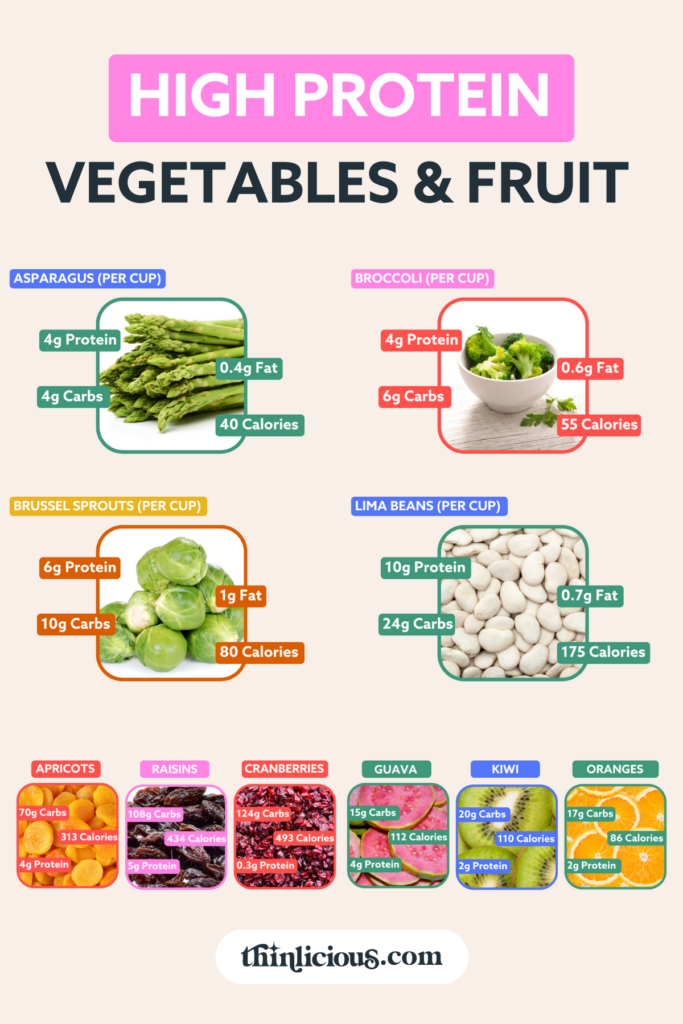
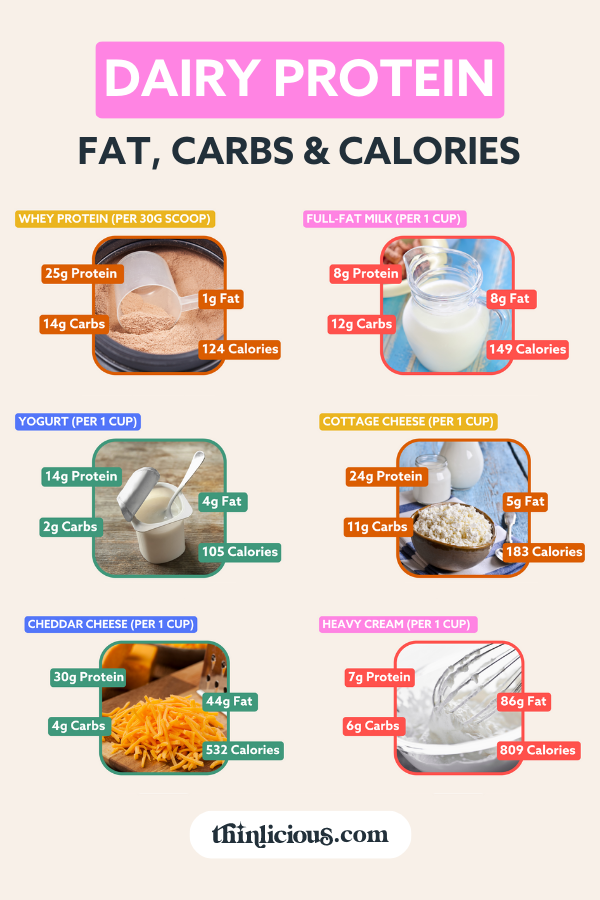
You’ll need to know how much protein is in meat (and the best meat to choose), how much protein is in vegetables, and the best high-protein dairy to eat.
Each of these charts will help you formulate a protein-sparing modified fast that is also a very low-calorie diet.
What is dirty PSMF (lazy PSMF)
If you want the easy version (cheat’s version) of the PSMF, and want to reach your macro goals easily, dirty PSMF is for you.
You can use protein powders, drink protein shakes, and eat protein bars.
But while the lazy PSMF is easy, it is not nutrient-dense and will not create healthy newfound eating habits.
And because ultra-processed food is so quick and easy to digest, you will be hungry much sooner after eating a protein bar than if you had eaten a skinless chicken breast.
While you might reach your macro goals easily, you will not reach your vitamin and micronutrient goals. In addition, ultra-processed food is easy to digest so you will feel hungry sooner. Try to eat whole foods as often as possible.
Does the PSMF diet lower your metabolism?
As you lose weight on any diet, you will require fewer calories.
But because the protein-sparing modified fast will maintain muscle mass, which is metabolically active, the effect on your metabolism should be minimal.
The PSMF calculator above shows a small calorie reduction as weight loss continues and you begin to hit your goal weight.
How long can you do a protein-sparing modified fast?
The traditional medically supervised protein-sparing modified fast has an intensive phase for 3-6 months, followed by a refeeding phase for 6-8 weeks.
However, for those on the keto diet who just need to hit the reset button and want rapid weight loss, you might want to have 3 or 4 PSMF days each week, with a more moderate ketogenic diet on the other days.
Why are micronutrients so important?
While calories and macronutrients in a protein-sparing modified fast are restricted, it may temporarily reduce the vitamins and micronutrients you are consuming.
For long-term health, you need to ensure you are meeting your minimum daily requirements.
You need to formulate a high-quality diet made of whole foods that are rich in vitamins and micronutrients. Or you may choose to take a good quality multivitamin.
Do you need supplements on a PSMF?
To avoid any nutritional deficiencies you may want to take a good quality multivitamin. Some people like to take a magnesium supplement and sodium supplements to help ease any muscle tension, prevent muscle cramps, and ease headaches.
You may wish to take a multivitamin and electrolytes that contain:
- Salt (sodium)
- Potassium
- Magnesium
- Calcium
🏆 The easy PSMF diet plan
This is another example of what to eat on a protein-sparing fast.
DAY 1 – PSMF
Breakfast: Scrambled eggs and egg whites
Lunch: 2-4 burger patties with lettuce
Dinner: Baked chicken breast wrapped in bacon with broccoli
DAY 2 – PSMF
Breakfast: 2 burger patties with a fried egg
Lunch: Canned tuna wrapped in lettuce
Dinner: Pork chops in the air fryer with broccoli or cauliflower
DAY 3 – PSMF
Breakfast: Protein-sparing bread with turkey and mustard
Lunch: Cooked prawns in a lettuce wrap
Dinner: Mexican chicken burger patties with lettuce
Snacks (optional):
- Canned tuna in water
- Slices of cooked chicken, turkey, or roast beef
- Boiled eggs
Lean meat protein sources for PSMF days
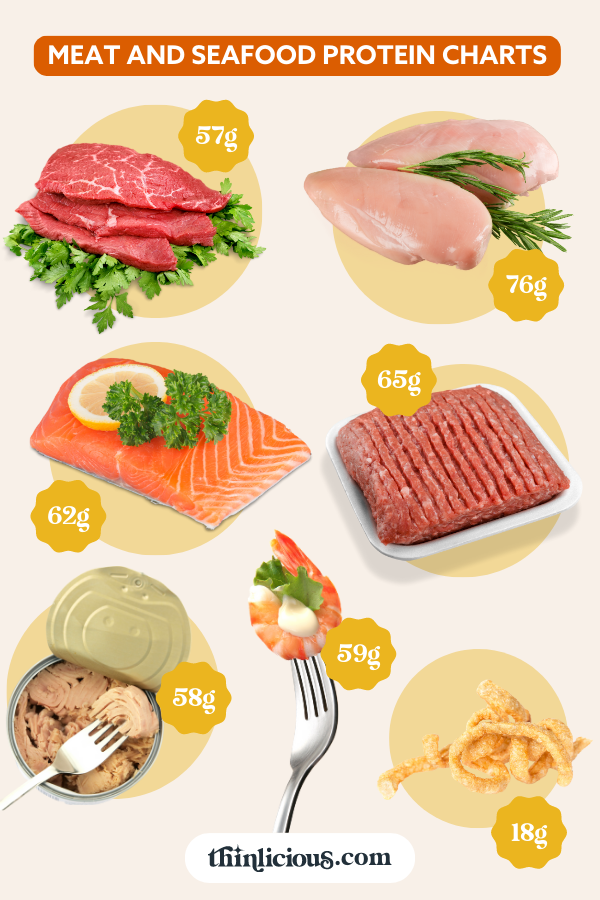
The keto diet requires fatty cuts of meat, whereas the protein-sparing modified fats require lean protein for rapid weight loss.
- Skinless chicken breast
- Lean ground beef,
- Skinless turkey
- Egg whites
- Whey protein isolate powder
- Tuna, cod, shrimp, or prawns.
- Fat-free cottage cheese, Greek yogurt, or
Can I snack on the PSMF?
While most people report reduced hunger on a high-protein diet, you may find yourself more hungry because of the reduced fat than when you were on the traditional high-fat keto diet.
If you are hungry, you may need to eat 3 or 4 times per day. You may want to have pure protein snacks or split your meals.
5 signs it’s time to switch to ‘maintenance’
- You keep falling off the PSMF diet and having cheat meals. This indicates the PSMF may not be sustainable for you.
- If you’re too hungry all the time, you may want to go back to a higher fat approach with the keto diet or low-carb diet.
- It has triggered eating disorders such as binging, purging, or emotional eating.
- You’re feeling dizzy, can’t concentrate, or have headaches that just won’t budge.
- You just feel lousy. The aim of any change in diet is to improve your health, not be the detriment of it.
🏆 PSMF FAQ
You can download the free printable PDF guidebook, meal plan, PSMF food list, and PSMF calculator.
For stubborn weight loss and those who are on a keto diet, you only need to eat PSMF 3 days per week. For obese patients who need considerable weight loss, you need to be medically supervised and may need to be in the intense phase for weeks or months.
You may need some quality carbs for an intense training session at the gym. But don’t go and eat a muffin or a slice of cake just because you’re training. Keep it nutrient-dense, whole food, unprocessed, is full of vitamins and minerals. Maybe some low-sugar berries in a high-protein smoothie, nut butter, or high-protein yogurt.
It can get boring quite quickly and the low-fat might take a little to become used to if you were on the keto diet. But as long as you can stick to 3 days each week, it is easy to stick to.
When you want to maintain muscle mass. A water fast can often give dramatic weight loss and help you reach your goal weight BUT it is nutritionally depleted of any protein, fat, carbs, fiber, and vitamins. Nutritional deficiencies are easy to occur with water fasts (intermittent fasting).
Because an increased protein intake is so satiating, it is difficult to overeat protein. Protein foods are filling so naturally help you to reduce your calorie intake to shed excess weight from your fat stores.
Keeping a food diary is important to monitor how much fat, carbs, and calories you are consuming. Food tracking will help to you make better food choices and see where you can cut back on unnecessary carbs or necessary fats.
Food tracking is often an eye opener to see which cuts of meat have the highest and lowest fat, which vegetables have the highest and lowest carbs, and which foods are high or low calorie.
Most people maintain their ideal body weight by sticking to a standard keto diet with adequate dietary protein, healthy fats (for essential fatty acids), and quality healthy carbs. Weight maintenance and weight gain are controlled by other factors such as activity, emotional eating, and good blood sugar control, more than any crash diet.
You can expect some weight regain in the refeeding phase, most of this will be water, not additionally stored fat.
Whilst weight loss on very low-calorie diets can be rapid at the beginning, most people settle into losing weight slowly by week 2. Rapid fat loss is often followed by an average weight loss of 0.5-1kg per week.
Eating a high-protein low-carb diet that is also a very low-calorie diet will encourage your body to burn body fat for fuel and go into nutritional ketosis.
Muscle is metabolically active and helps to maintain your metabolism. Your lean muscle mass helps to regulate a fast metabolism because muscles burn calories, even at rest. Muscle mass is your metabolic currency that determines your metabolic rate.
Many bodybuilders like to have shred days (losing fat) followed by bulk days (gaining muscle). They reduce their calorie intake on the shred days, followed by a high-protein diet designed to stop weight regain.
The dirty protein-sparing modified fast uses protein powder, protein shakes, and protein bars. While you might reach your macro goals easily, you will not reach your vitamin and micronutrient goals. In addition, ultra-processed food is easy to digest so you will feel hungry sooner. Try to eat whole foods as often as possible.
If you have a lot of weight to lose, have a stubborn weight that is difficult to budge, or have hit a weight loss plateau on the keto diet and want rapid weight loss, it may be worth trying the PSMF diet.
Obese patients need to be medically supervised on very low-calorie diets. Rapid weight loss may affect their blood pressure, and blood sugar control, and because medical PSMF is longer than a crash diet, they need to be monitored for any nutritional deficiencies.
Gaining muscle mass and losing body fat to reach your goal weight is the goal of protein-sparing modified fasts and the keto diet. Lifting weights to burn calories and gain muscle is encouraged.
Anyone with a pre-existing medical condition such as high blood pressure (or low blood pressure) must seek the approval of the medical professional they see most often. Many people find their blood pressure normalizes and so may need their medication reassessed by a doctor.
BMI (body mass index) is an outdated term that gives a ratio of height to weight. It does not reflect how much of the weight comes from body fat, or muscle mass. It does not reflect the state of health of that person. A bodybuilder could have a high BMI because their muscle is heavier (than someone with more body fat) yet be incredibly healthy.
To prevent regaining the weight lost after you finish your protein fast, eat just enough protein and nonstarchy vegetables with some healthy fats. Follow a simple low-carb diet or keto diet.
🏆 97 PSMF foods to eat
What are the easiest foods to eat when on a protein-sparing modified fast? Here are the 97 easiest foods to buy and recipes to make.
Try to base your meals and snacks on natural healthy whole food to help prevent any nutritional deficiencies.
To maximize weight loss and lose fat fast, you must check nutrition labels to ensure there are no added sugars or unnecessary carbs. Try to limit diet drinks, sauces, and higher-carb vegetables from the list to a minimum.
Lean protein foods
Try to choose protein sources from whole food, rather than protein shakes, powders, or bars.
- Skinless chicken breast
- Turkey slices
- Canned tuna in water
- White fish (cod etc)
- Halibut
- Shrimp
- Ground chicken
- Prawns
- Extra-lean beef
- Pork loin (fat removed)
- Mussels
- Veal
- Trout
- Oysters
- Ground turkey
- Sirloin steak
- Pork chops
- Burger patties (no fillers)
- Lobster
- Crab
- Egg whites
- Flounder
- Snapper
- Sardines
- Roast pork (fat removed)
- Good quality protein powder such as whey protein isolate for snacks, before workouts, or as a quick meal replacement. Do not rely on protein powders for every meal.








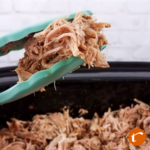




Non-starchy vegetables
You might like to bulk up your meals with a selection of non-starchy vegetables.
- Broccoli
- Cauliflower
- Mushrooms
- Lettuce
- Celery
- Cabbage
- Cucumber
- Spinach
- Silverbeet/Swiss chard
- Zucchini/courgette
- Radish
- Spring onion
- Asparagus
- Alfalfa sprouts
- Eggplant

High-protein low-fat dairy and cooking oils
Remember calorie restriction is the goal so keep the added fat to a minimum while losing weight.
- Greek yogurt
- Cottage cheese
- Butter
- Extra virgin olive oil
- Coconut oil
- Parmesan cheese
- Cram cheese
PSMF drinks
- Water
- Black coffee
- Black tea
- Mineral water
- Carbonated water
- Diet drinks (minimal)
- Green tea
- Herbal teas (no sugar)
- Bone broth
PSMF desserts
- Sugar-free jello
- Protein-sparing bread made into buns, eclairs, and cinnamon swirls.


PSMF bread
The original and easiest protein-sparing bread recipe has to be that of Maria Emmerich. Protein-sparing bread is made using egg white powder, allulose, salt, cream of tartar, and water.



PSMF condiments
- Real mustard (no added sugar)
- Herbs and spices
- Garlic powder
- Onion powder
- Salt, pepper, seasonings
- Tabasco
- Liquid smoke
- Stock cubes (wheat free)
- Soy sauce (no added sugar)
- Wasabi paste (minimal)

More PSMF resources
You can download the free printable PDF guidebook, meal plan, PSMF food list, and PSMF calculator.
- Short and long-term results of a progressive reintroduction of carbohydrates (PRCH) after a protein-sparing modified fast (PSMF)
- Approaching the protein-sparing modified fast
- The Protein-Sparing Modified Fast Diet: An Effective and Safe Approach to Induce Rapid Weight Loss in Severely Obese Adolescents
- Increased protein intake reduces lean body mass loss during weight loss in athletes
What if you could actually take control of
your health in just 10 days?
It’s not your fault you can’t lose weight as a woman over 40 even though you’ve likely tried literally everything. Your metabolism probably feels broken and your hormones are likely all out of whack.
But you can fix it all with ONE simple change: eliminate sugar. We make it super easy with daily lessons teaching you the science behind what makes us gain weight in our midlife and beyond! Are you ready to get started now?

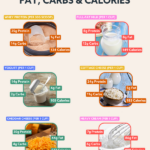

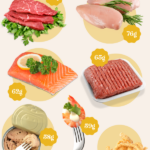
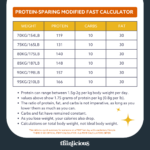
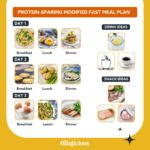


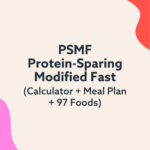
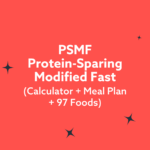
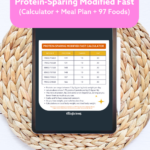
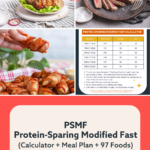
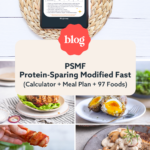
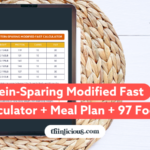
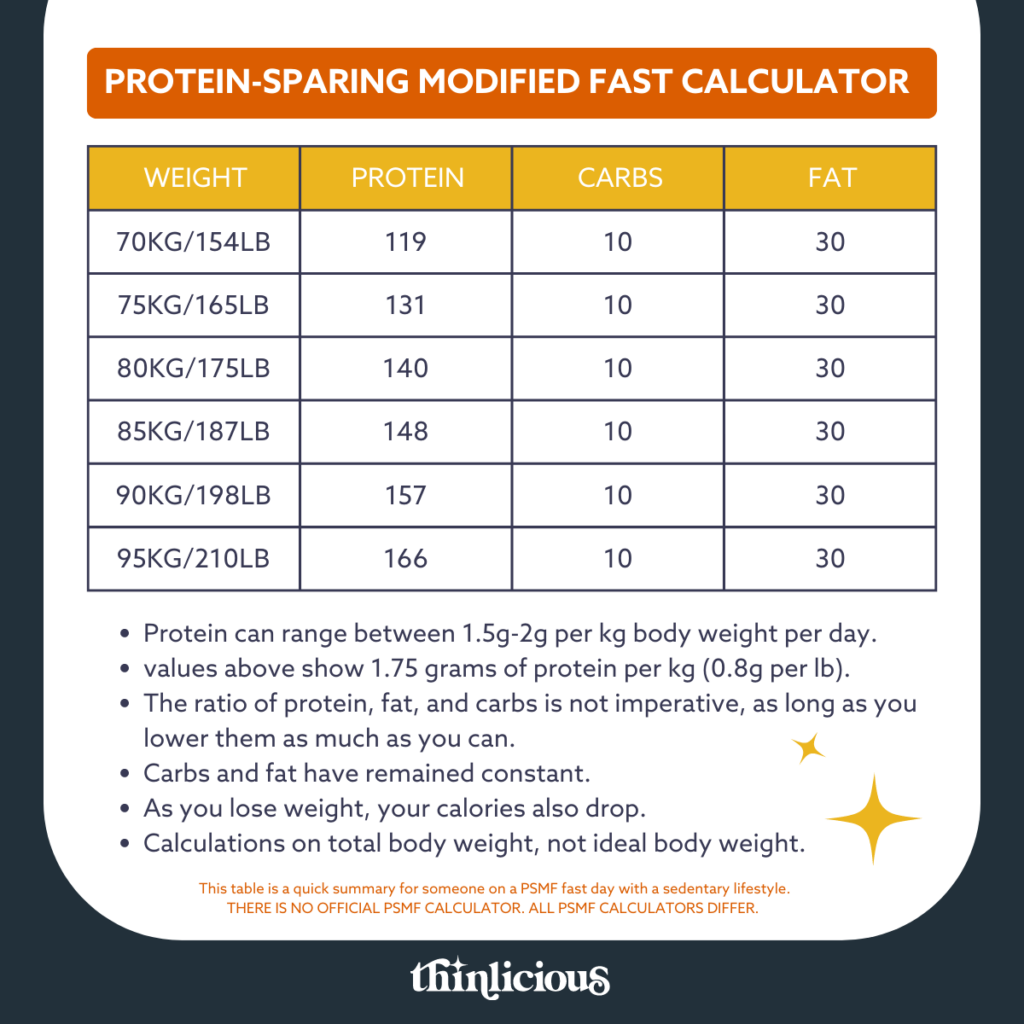
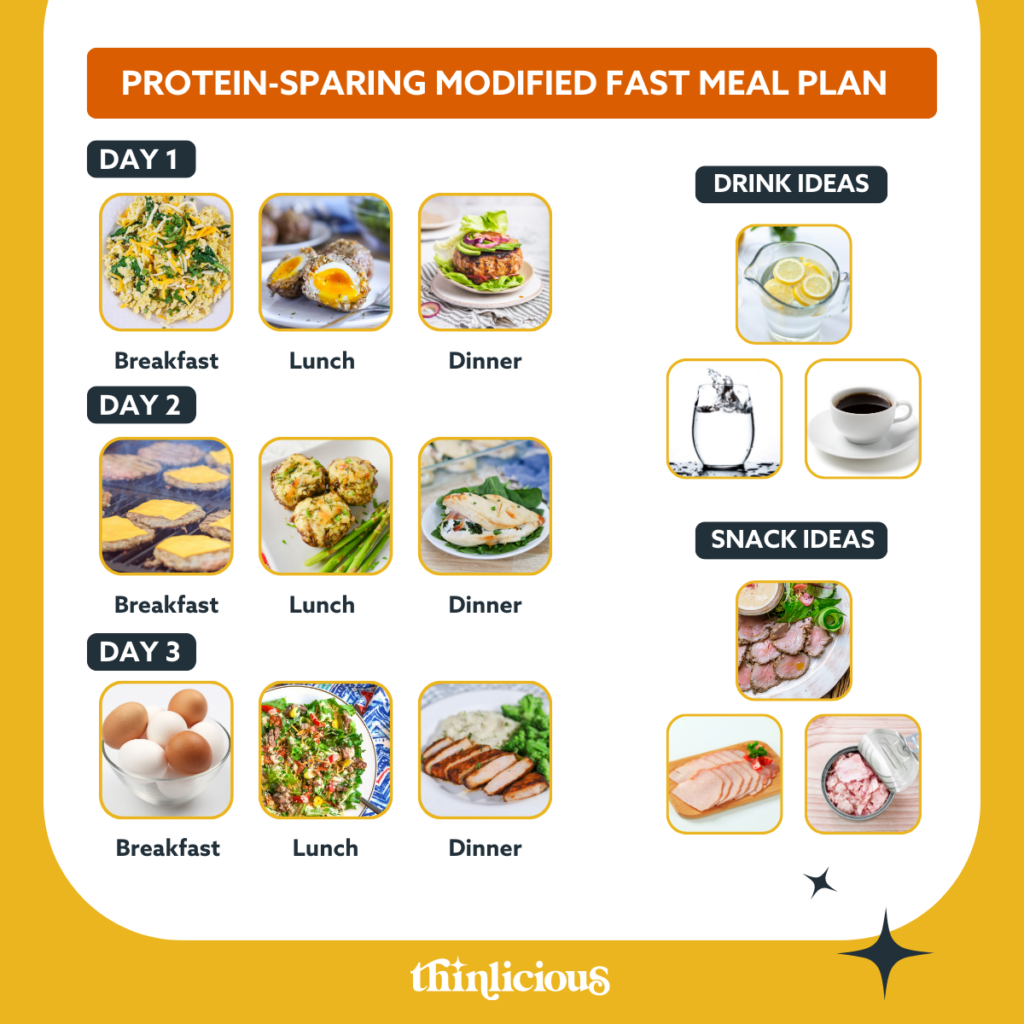
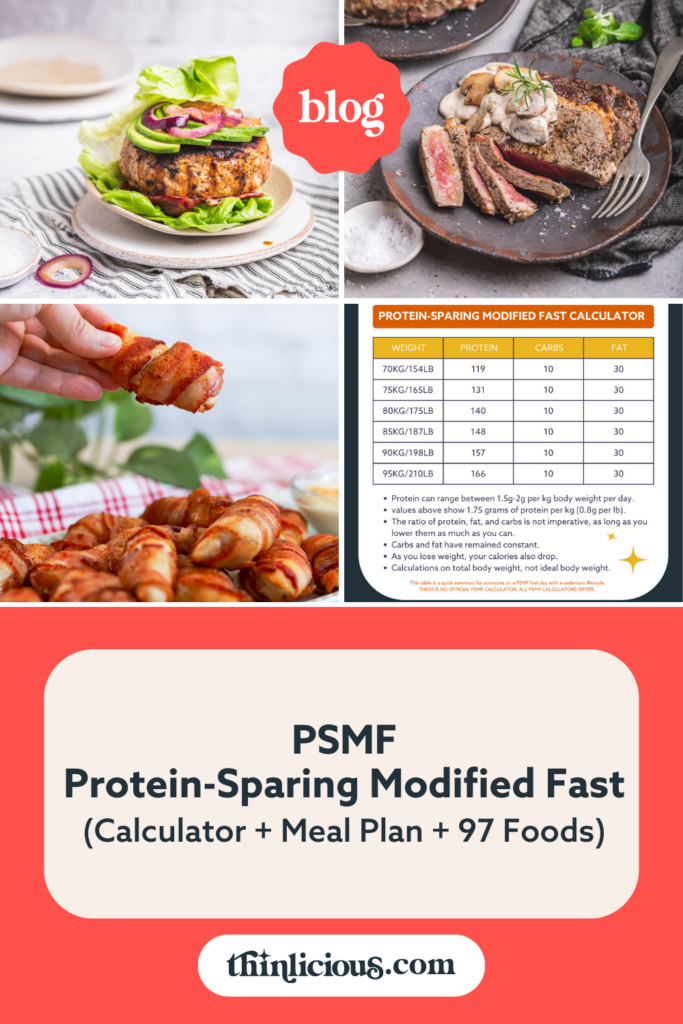
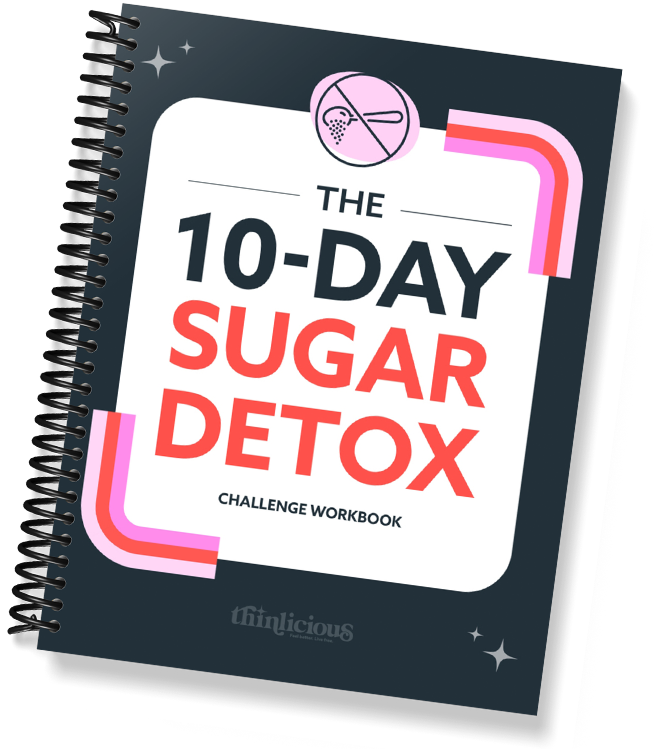






Dear Libby, with all the respect to your passionate work, sharing knowledge and divulgating helath topics about safe dieting, this time I can’t omit to notify that you should have explicit that there are also precise goups of people that CANNOT follow a PSMD, such as underweight and those who have suffered (or still suffering)for eating disorders/dismorphophobia/ortorexia… I mean, being you generally so precise, this time you could have done better… Hoiping that you won’t misunderstand me even if I’m not good in English, thanks again for your effort
I agree, I mention this above “WHO SHOULDN’T DO A PSMF DIET?
Anyone who has a preexisting medical condition that needs constant medical supervision during weight loss needs permission from their regular medical professional to start.
This is not to say PSMF is not safe for these patients, but they will need medical supervision and monitoring as they lose weight and their health markers may improve. Some medications may need reducing or adjusting. For example (but not limited to), people with:
Heart palpitations
Angina (chest pains)
Heart attack
Heart disease
Hypoglycemia
Kidney disease
Eating disorders
Underweight
Thyroid disorders
Pregnancy, lactating
Gallbladder disorders”
4 places here say I can download the free PDF guide, etc. Cannot find a single link to do so. Help?
Hi Jude, I’m sorry you missed these. The first one is directly under the big image at the top, and a few other areas are dotted within the post. If you are a Ditch The Carbs PRO member, I sent the file in last week;s newsletter too.
Thank you for posting this plan Libby. I just want to clarify the food list and the sample meals. The food lists do not list eggs, but only egg whites, yet the sample meals have scrambled eggs and scotch egg as meals. Also, is cream cheese on the food list? (cram cheese is this meant to be cream cheese).
Great post and fantastic information! Just wondering if you have removed the download link where all this info is contained in the one pdf? I have gone over the page with a fine tooth comb and cannot find the link. Am I going crazy?
Hi Susan, if you enter your name and email address in the boxes just under the first picture the pdf will be emailed to you and you can download it from there. Thanks!
One thing I haven’t seen in any articles is in regard to the timing of the high protein meals. Should I eat before resistance training, or after? If before, how long before? Seems like this would be a relevant factor in doing this right.